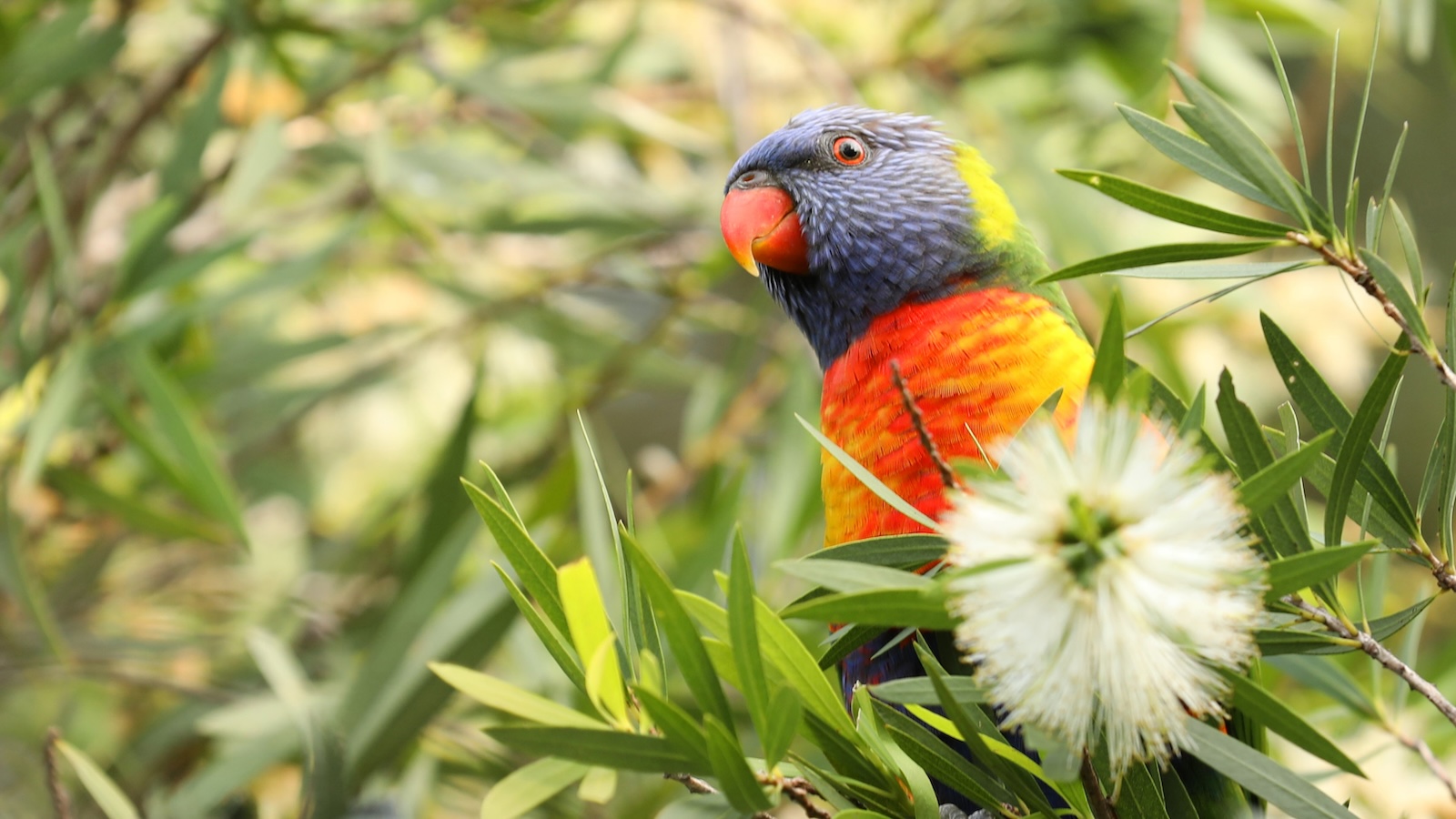Rainbow Lorrikeet (Trichoglossus moluccanus)
Australia is home to over 700 of nature’s most spectacular bird species, from acrobatic galahs and mischievous magpies to the majestic king parrot. With the right combination of native plants, clean water sources, and thoughtful garden design, you can transform your backyard into a haven for Australia’s feathered locals.
Why Attracting Native Birds Matters
First things first – why would you want local birds in your backyard? Aside from the obvious visual benefit of bright blue fairy-wrens zipping past your window, bird-friendly gardening can have a range of advantages, both for your own garden and the ecosystem as a whole.
Conservation at Home
With accelerating urban development and habitat fragmentation, many native bird species are feeling the pressure. Creating a bird-friendly garden provides much-needed food, shelter, and protection for native species, and helps to restore some of the habitats these birds have lost. It might feel like a small step, but collectively, home gardens can play a big role in the conservation of Australia’s birdlife.
Natural Pest Control
Many native birds can be fantastic garden helpers. Insectivorous species like the grey fantail and willie wagtail feed on a variety of creepy crawlies, helping to naturally reduce the population of garden pests like aphids, caterpillars, and of course, mosquitoes. This allows you to create a more balanced ecosystem that relies less on harmful chemical pesticides.
Pollination and Seed Dispersal
Nectar-feeding birds such as lorikeets, spinebills, and honeyeaters help to pollinate flowers as they forage, helping those plants reproduce and keeping your garden healthy. Other birds, such as cockatoos and currawongs, often feed on fruit, dropping their seeds into new patches of soil and giving native plants a chance to sprout where they otherwise wouldn’t.
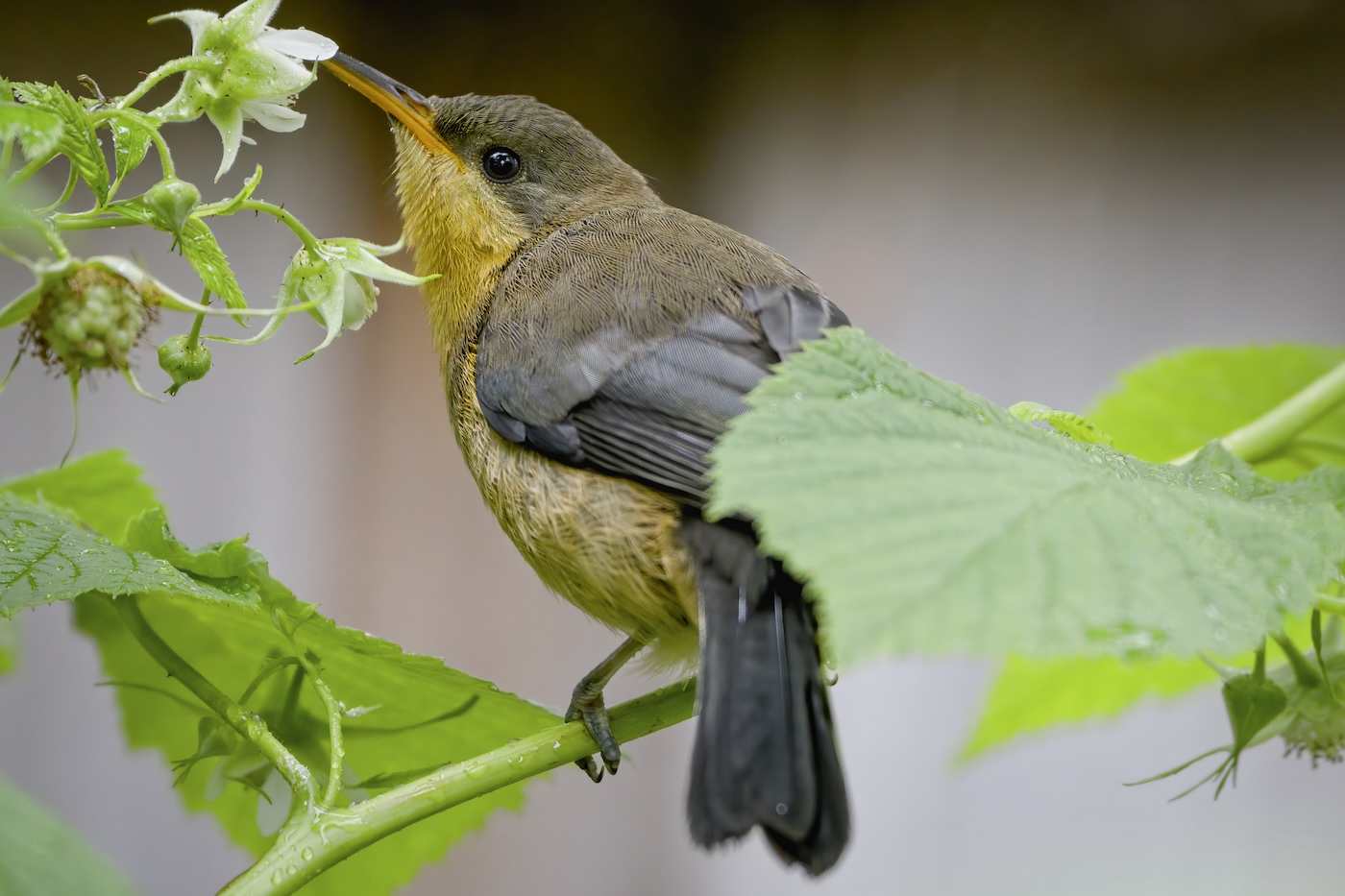
Eastern Spinebill (Acanthorhynchus tenuirostris)
Which Plants are the Best for Attracting Native Birds?
The best way to attract native birds is to grow what they know, and prioritise plants that are indigenous to your local area. This means before rushing off to buy more plants (don’t worry, we’re all guilty of it!), take stock of what’s already growing in your garden, and observe which plants are already attracting native birds. If you already have a bird-friendly foundation, you can build around that with complementary plants that fill in any gaps.
For example, if you have a backyard gum tree you’ve seen cockatoos perching on, consider adding some nectar rich-flowers or dense ground cover for shy, smaller birds to shelter in.
If you’re starting from scratch, prioritise native Australian plants where possible; species like Grevillea, Acacia, and Banksia, as well as native grasses like Kangaroo Grass and Tussock Grass are all popular, bird-friendly options (check out our other post on Designing a Native Australian Garden for more ideas!)
Ideally, you want to mimic natural habitats as much as possible by creating layers of vegetation at different heights; this means a mix of tall trees, mid-sized plants, small shrubs, and ground cover. Choosing plants that flower at different times of the year will also ensure that you have something bird-friendly in your garden, regardless of the season.
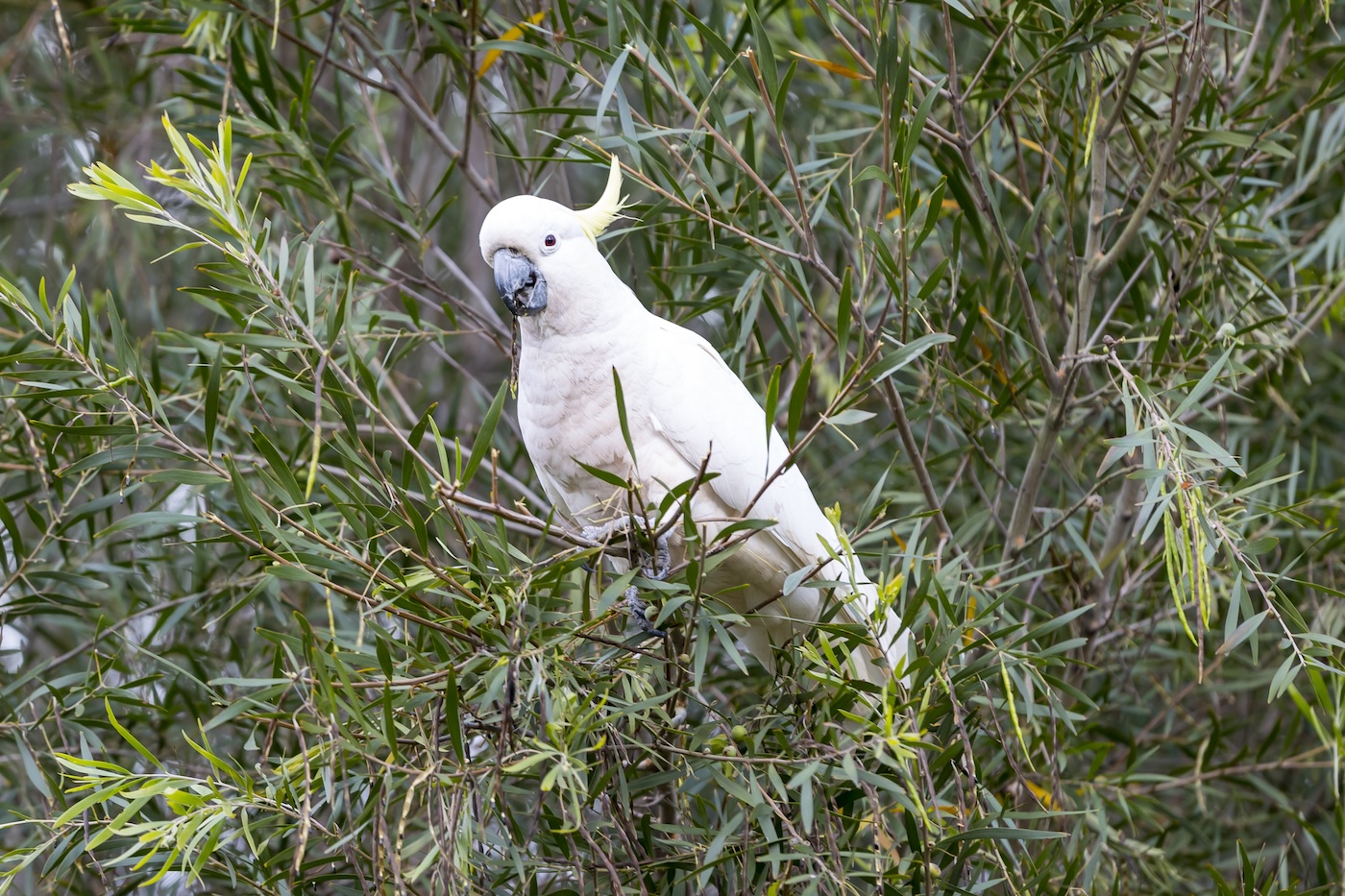
Sulphur-Crested Cockatoo (Cacatua galerita)
Water Sources: Bird Baths & Ponds
A clean, continuous source of water is essential for your bird-friendly garden, providing birds with a place to drink, clean their feathers, and cool off in the warmer months. You don’t need to go buy an expensive bird bath; even small additions, like a shallow bowl or hanging dish, can bring in new visitors almost overnight.
The key is to make your water source safe and accessible. Bird baths should be shallow with gentle, sloping sides, or include pebbles or sticks so birds can perch easily, and insects or small reptiles can escape. Place baths off the ground where possible and near dense shrubs or small trees, so birds have a quick escape route if they feel threatened.
Keep the water clean and topped up, especially during hot weather when birds are most in need. Having multiple water spots around your garden, especially near flowering plants or shaded areas, will also give different species space to drink and bathe in peace.
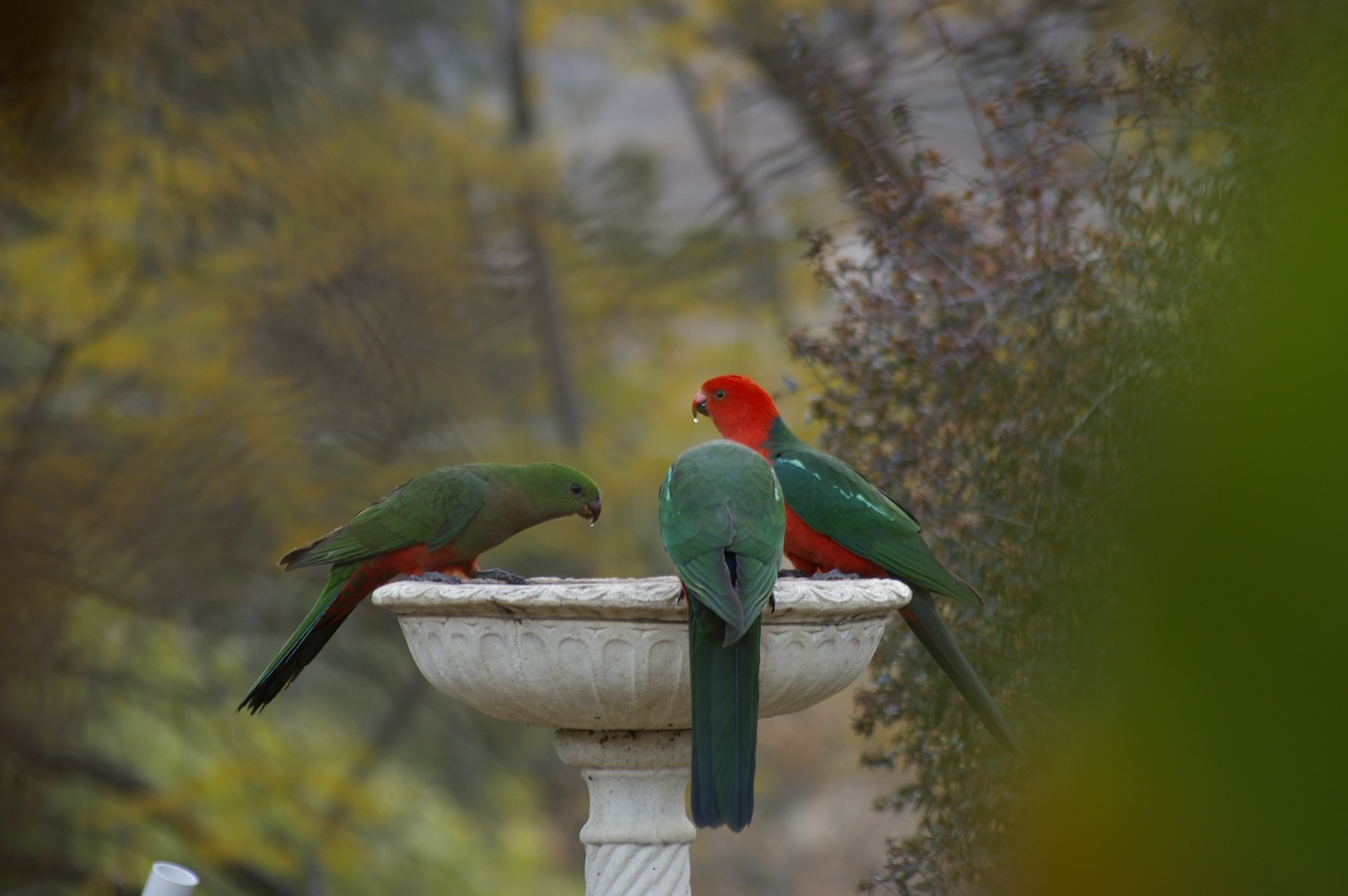
Australian King Parrot (Alisterus scapularis)
Should I Feed Native Birds in my Garden?
Your first instinct might be to put out a plate of food and attract birds that way, but it’s important to do it properly, and know which foods are safe. Never feed birds bread, raw meat, processed food, or anything high in refined sugar, salt, or artificial additives. Instead, stick to fresh fruit (excluding avocado, which is highly toxic to many bird species), chopped veggies, and high-quality seed mixes or specialised insectivore blends from reputable pet suppliers. Ensure that feeding areas are kept clean, and vary when and what you offer to avoid attracting large, dominant species that might scare off smaller visitors.
It’s also important to consider the amount of food being left. Birds are specialised foragers, and the majority of their diet should come from natural sources, so treat any food being left out as a light snack, not a meal. Don’t feed them every day, to prevent them becoming overly reliant on you.
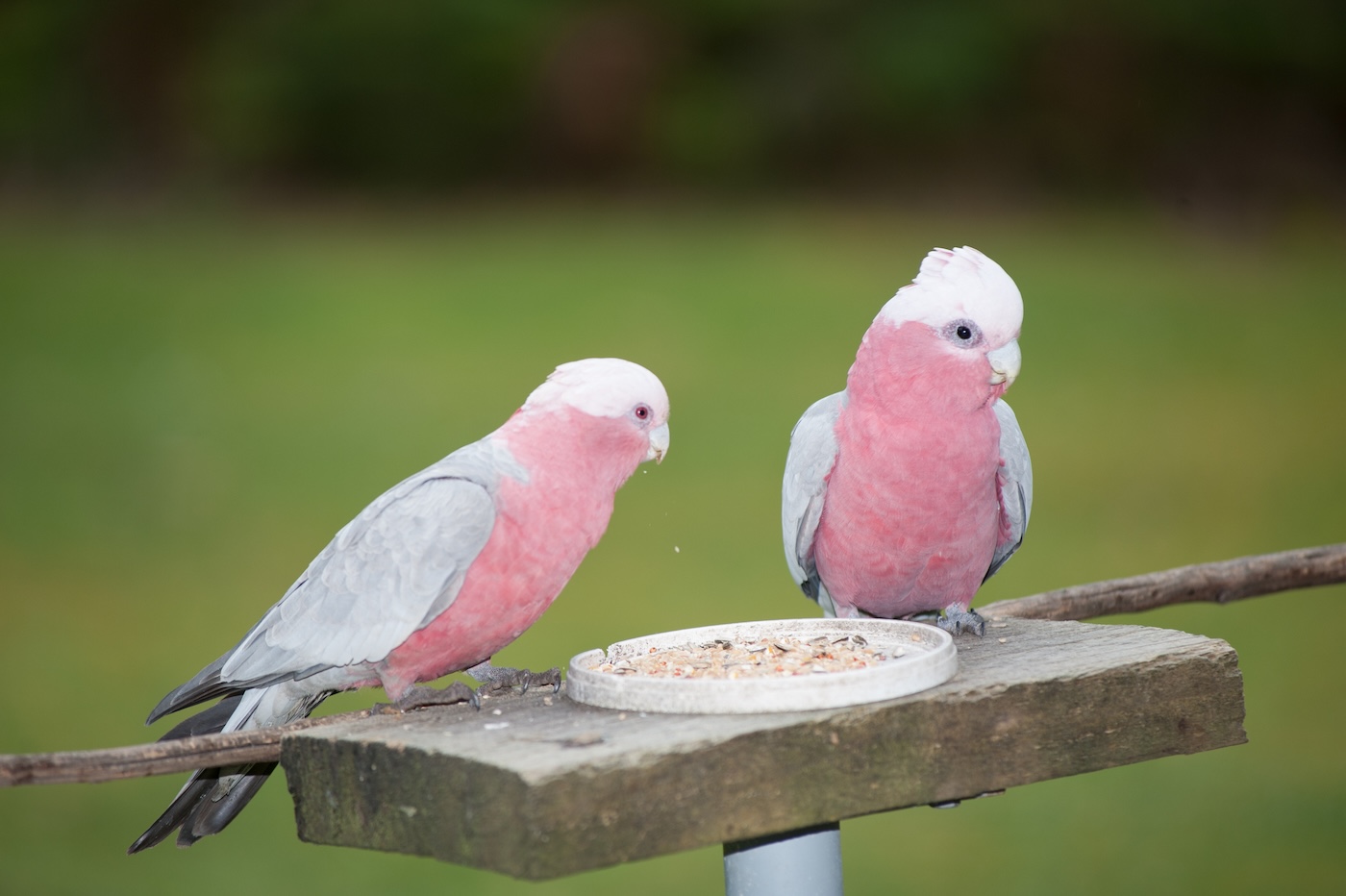
Galah (Eolophus roseicapilla)
If you have tall trees, you can also consider adding a nesting box. Many native birds rely on tree hollows for breeding, but these are becoming rare in suburban areas. With the right box in a sheltered spot, you can provide a safe space for these species to raise their young, encouraging them to return year after year.
Structuring a Bird-Friendly Garden
Now you have a few bird-friendly native plants, a place for them to eat and drink and maybe a nesting box or two, what comes next? Creating a bird-friendly garden isn’t just about what you include, but also about how you structure your space. Well-defined garden beds can help separate different habitat zones, reduce disturbance, and protect fragile areas where birds forage or nest.
Using garden edging to create separate planting zones can help keep mulch in place, protect soil, and stop weeds from intruding into the places where birds forage and shelter. A low-profile garden edging like Cor-Ten blends beautifully into native gardens, and is flexible enough to follow natural curves or create clean lines. Garden rings can be a nice way to allow small trees and flowering shrubs to become established, providing future shelter, nesting spots, and food sources for visiting birds as they grow. By designing a strong structure, you can create a space that’s safer and more welcoming for native birds to thrive.
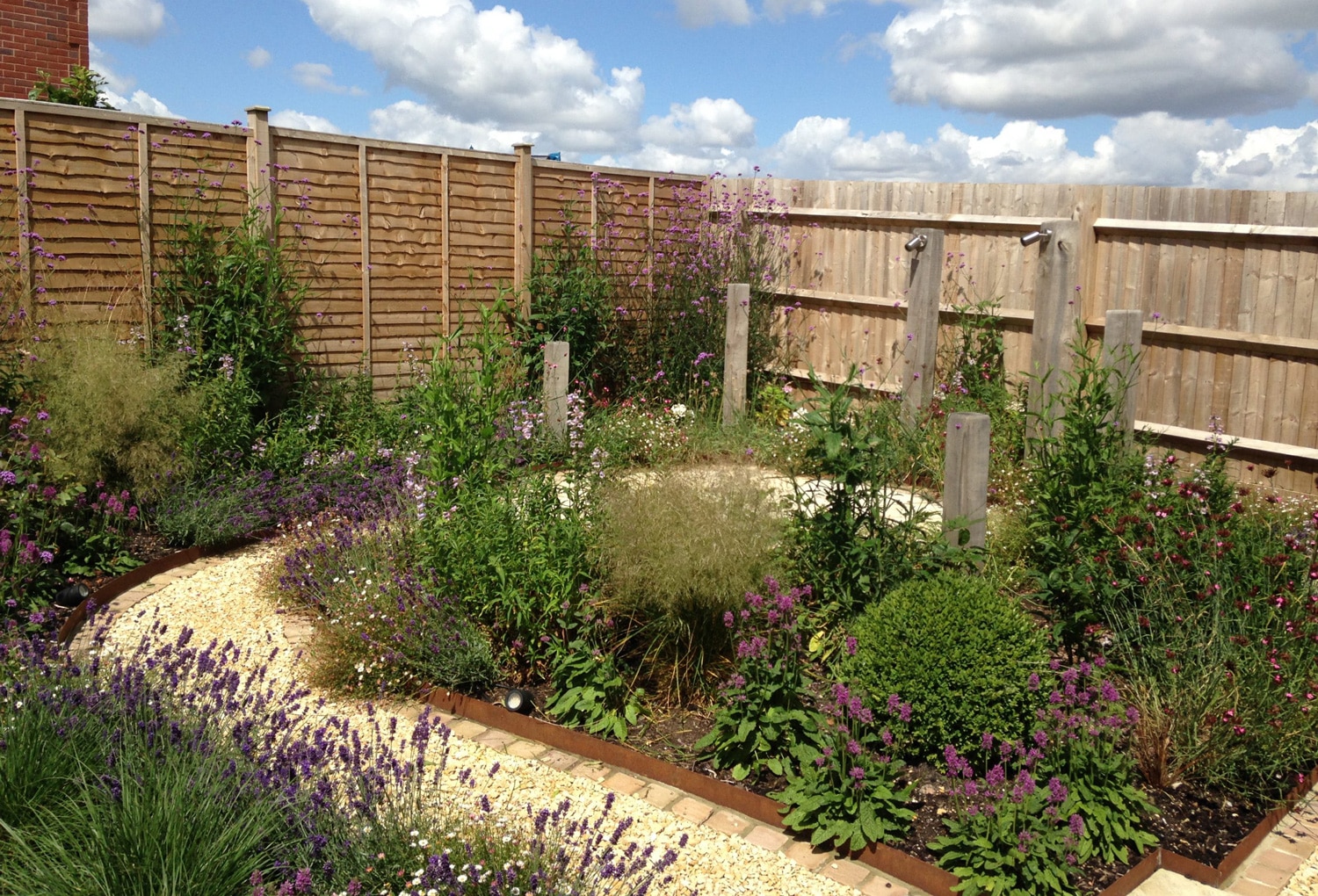
A Backyard Garden using Cor-Ten edging
Protection from Pets
Let’s address the elephant in the room – or in this case, the cat in your yard. Domestic cats pose a serious threat to birds in suburban areas, and even well-fed pets will hunt by instinct. Keep cats indoors, or consider an outdoor cat enclosure to keep their claws away from your feathery visitors. Dogs can also disturb ground-feeding birds, so it’s best to supervise them in bird-friendly zones. Creating a bird-safe garden means thinking about what’s coming in—and what might be chasing it.
Creating a bird-friendly garden is one of the simplest and most rewarding ways to support local wildlife. With a few thoughtful choices like selecting native plants, fresh water, safe shelter, and a well-structured layout, you’ll turn your backyard into an avian haven that helps to support Australia’s fragile, spectacular ecosystem.
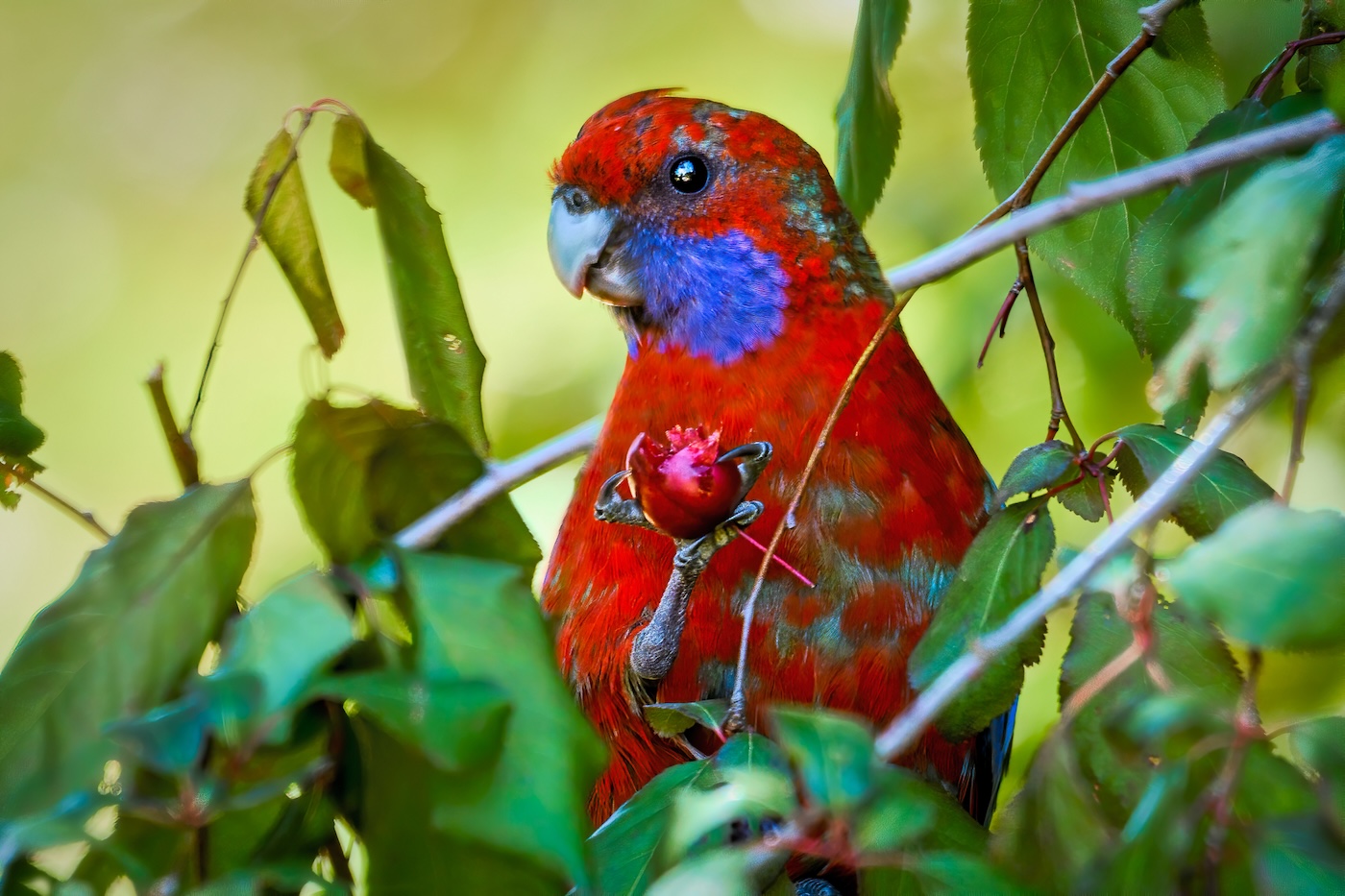
Crimson Rosella (Platycercus elegans)

